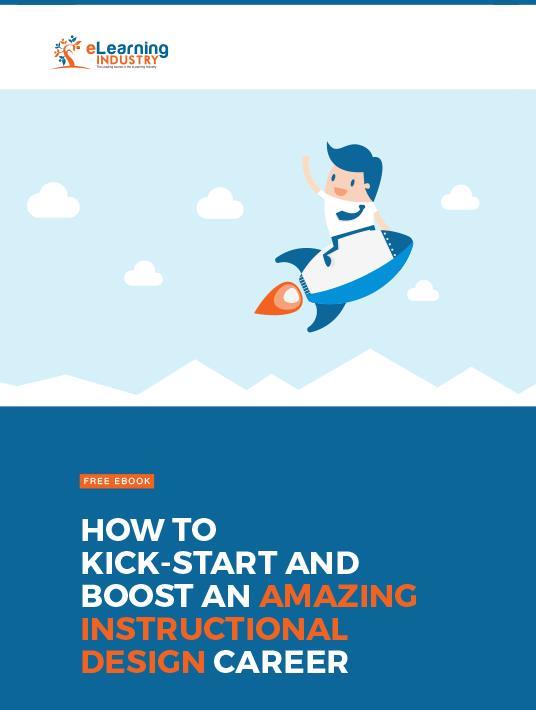How To Find Your Instructional Design Dream Job
You know you love working in Instructional Design, and you are ready to take the steps to making it your career. What happens next? Sending resumes into the job hiring vortex might leave you frustrated and wondering if there actually is a market for your skill set. Instead of approaching your job search in the traditional way, follow the simple and actionable 6 steps below. They'll guide you through figuring out which type of jobs you actually want and landing your Instructional Design dream job.

Step 1: Determine What You Consider A “Dream Job”
The concept of what a dream job is can vary greatly from person to person. There is not one correct answer for what the ideal job situation is. You need to define it for yourself. Sit down and think about what you really wish you could do for work. Is it part time, full time, or freelance? Does it involve a lot of client interaction or is it mostly self-guided? Take notes on what your optimal work situation will be, and keep that handy for when you move on to the next steps in your action plan.
Step 2: Identify Your eLearning Niche Within The Field
Instructional Design is a melding of many different fields. You need to be well versed in all of them to create the best eLearning courses. However, as with most fields, you will likely develop an area of expertise. Use this particular set of Instructional Designer skills to set yourself apart from other candidates. Make sure it is something that is in demand and marketable so that you can easily use it as a selling point when talking to potential clients.
Step 3: Create A Simple Way For Potential Clients To Reach You
Now that you have figured out how you want to work and what sets you apart, you need to create a digital presence. Your Instructional Design portfolio is a gateway for clients to get to know you without creating the need for you to send out countless proposals that all say the same thing. Use your Instructional Design portfolio to show samples of your past work, particularly those that fall in your eLearning niche. Then create a contact form on the site where potential clients can ask for quotes. While your Instructional Design portfolio will likely get you a few clients, you will need to focus most of your job-getting efforts on the next few steps.
Step 4: Learn The Scope Of The Current Market
Instructional Design is an in-demand field right now, and there are a lot of people competing for the same eLearning projects. You need to learn where you fall within the talent pool and get a sense of what under-tapped markets exist. This can be achieved through networking and research. Talk to other people working in the field, particularly in your area of expertise. Listen to their advice and take note of any drawbacks they mention. While some eLearning freelancers play it close to the vest when talking about project work for fear of losing clients, others are more than willing to exchange Instructional Design tips.
Step 5: Do Some Trial eLearning Projects
You can’t get to the top without putting in the effort. If you can’t seem to get a bite when you send out proposals, start small. There are plenty of Instructional Design jobs that involve refining eLearning content that has already been created. Sinking your professional teeth into a brand new eLearning project might seem tempting, but it is better to start with smaller trial eLearning projects. If you are instantly thrown into the deep end, you risk getting overwhelmed and disappointing yourself, as well as the client. Find clients looking for help with pieces of eLearning projects on jobs boards and freelance services. Use these eLearning projects as a springboard to develop your Instructional Design portfolio and get some real-world experience in the field.
Step 6: Reach Out To Companies You Want To Work For First
Instead of waiting for people to come to you, get in touch with them. Most companies do not have the time to hunt for online portfolios of Instructional Designers that will meet their needs. Even if these potential clients do not have job ads up at the moment, if you feel you would be a really great asset to their eLearning projects you can reach out and let them know. Do not be intrusive or pester them. Send an inquiry email along with your Instructional Design portfolio link and a short statement about why you think you would be a good fit for the work they do. Request that they follow up with you if they have any questions or want to chat about a possible eLearning project. Reaching out to clients can be a great way to get your foot in the door and land your Instructional Design dream job. Even if they don’t have anything for you right now, you might just be the first person they think of when the need for an Instructional Designer does arise.
Now you have a concrete road map toward your Instructional Design dream job. Use these 6 steps to guide you as you build your client base and grow your business. Always take the time to refresh your Instructional Designer skills and pay attention to new eLearning trends in your area of expertise so that your clients are always impressed with the work that you produce. As time progresses, you will find yourself enjoying the work that you do and learning interesting things along the way.
Get all the information you need to start a successful Instructional Design career today. Download our free eBook How To Kick Start And Boost An Amazing Instructional Design Career to learn tips on how to create an amazing Instructional Design portfolio, as well as how to design meaningful eLearning experiences that engage and inspire.






